St James' Anglican Church
Edwin Street, Croydon
James Conacher & Sons, Huddersfield, 1893
2 manuals, 15 speaking stops, mechanical action
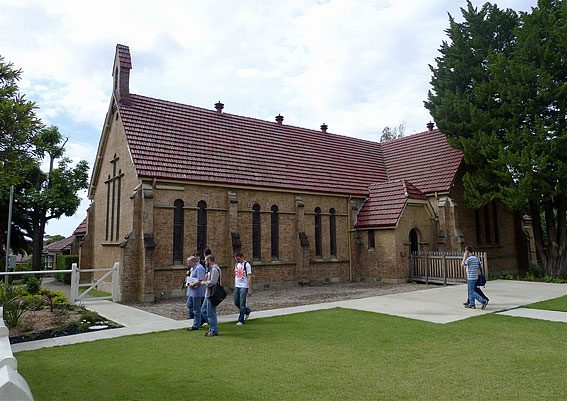
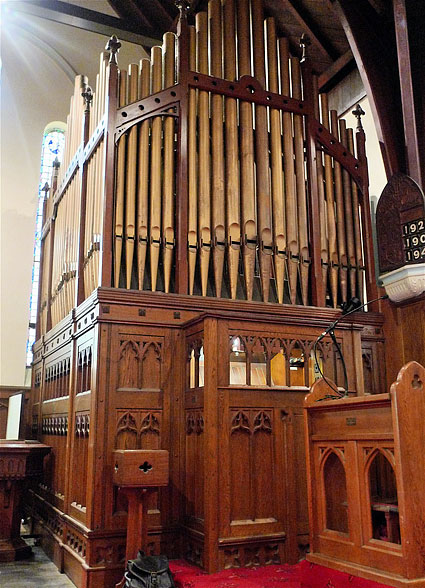
Historical and Technical Documentation by Kelvin Hastie and John Stiller
© OHTA 1980, 2010 and 2023
St James' Church was designed by Edmund Blacket and opened in 1883 – the building was originally intended to be used as a school and temporary church, but the arrangement became permanent and in 1891 the building was extended with the additions of a transept and chancel.1
The present fine organ was built in 1893 by James Conacher & Sons of Huddersfield (a firm not to be confused with the rival company, established by James' brother, and known as Peter Conacher & Co., "The Old Firm"). Only two instruments by James Conacher were sent to Australia, the other – for St Stephen's Presbyterian Church, Bathurst, also dating from 1893 – was electrified by Geoffrey Kendall in 1974 and was removed to storage in 2018.2
In 1980 the Croydon instrument was documented by John Stiller and he reported that only minor alterations had been made to the instrument. These included the painting of the façade pipes, obliterating the original decorations, the replacement of the hitch-down pedal by a balanced pedal and the removal of a non-original tremulant. As a rare local example of its builder's work, Stiller noted that it was significant on account of the following:
1. All of the original pipework has been preserved. . . . The open metal pipework has retained its cone-tuning and the wooden pipework shows a high standard of craftsmanship and an advanced level of design for its time.
2. The original case has been preserved, although the display pipe decorations are no longer present.
3. The original console has been retained, and includes original fittings such as stopknobs, most of the stop labels, keyboards, keyboard cheeks, pedalboard, composition pedals, nameplate of builder, and console telltale.
4. The original mechanical key, stop and combination actions are present, and the operation of the Swell Super Octave coupler demonstrates ingenuity of design.
5. The original hand-blowing apparatus is present and functions perfectly.3
Stiller noted the specification as follows:
|
8 8 8 4 4 2 16ft tone 8 8 8 8 4 3 ranks 8 16 |
non-original label stop label missing non-original label C-B from Lieblich Gedact from c0 non-original label non-original label |
- Mechanical action
5 composition pedals - 1 Graeme Rushworth, Historic Organs of New South Wales: the instruments, their makers and players, 1791-1940 (Sydney: Hale & Iremonger, 1988), 234.
- 2 Ibid., 235, and details of its removal supplied by Pastor de Lasala, December 2018.
- 3 John Stiller, "St James' Anglican Church, Croydon, NSW. Documentation of Pipe Organ built by James Conacher & Sons". Organ Historical Trust of Australia, 1 October 1980.
Compass 56/30
Number of pipes = 802
Pitch = a quarter tone sharp at 21 0 C
Wind pressure = 2-5/8"
Composition of Swell Mixture 3 RKS
C – b0: 15.19.22
C1 – b1: 12.15.19
C2 – b3: 8.12.15
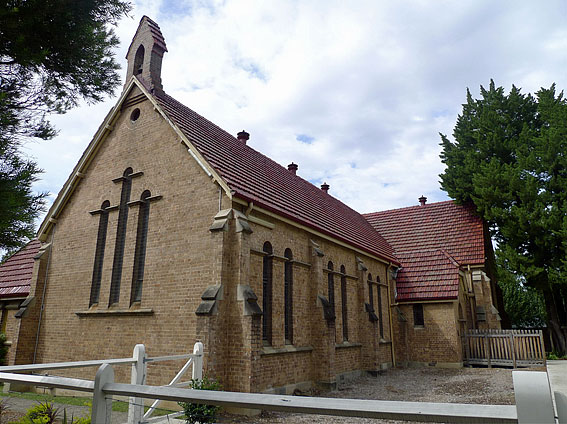
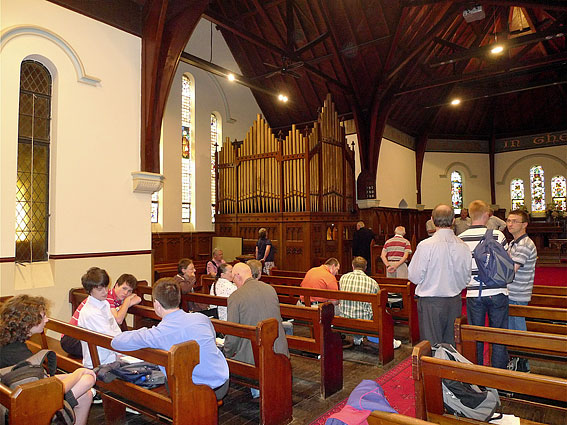
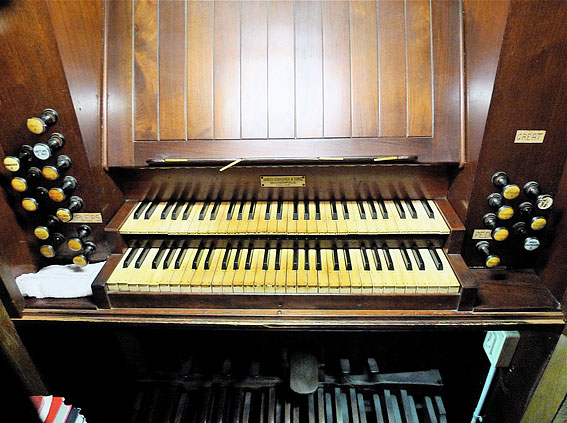
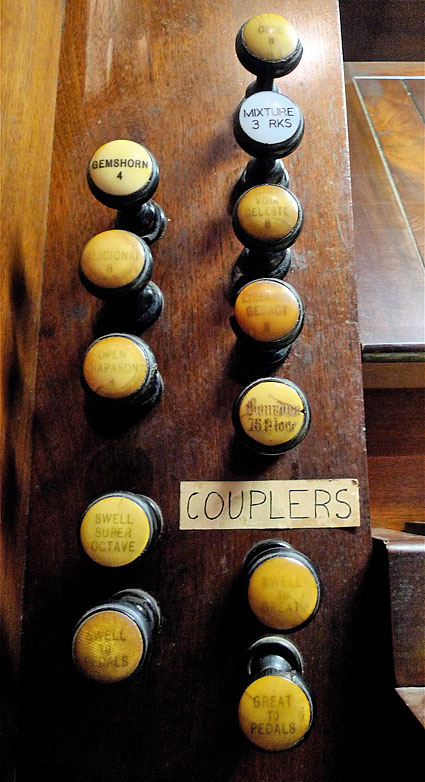

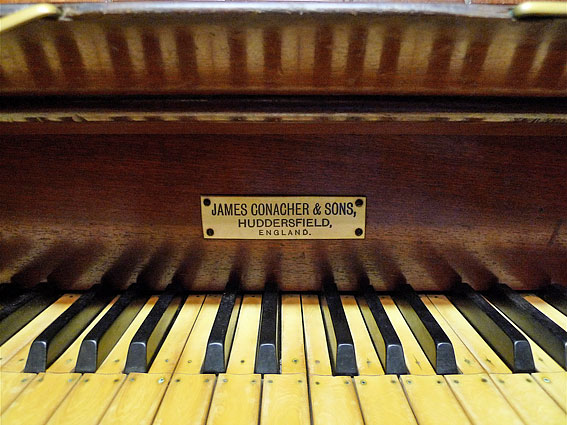
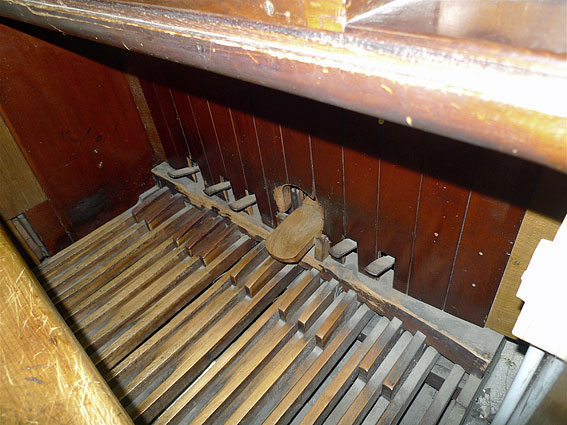

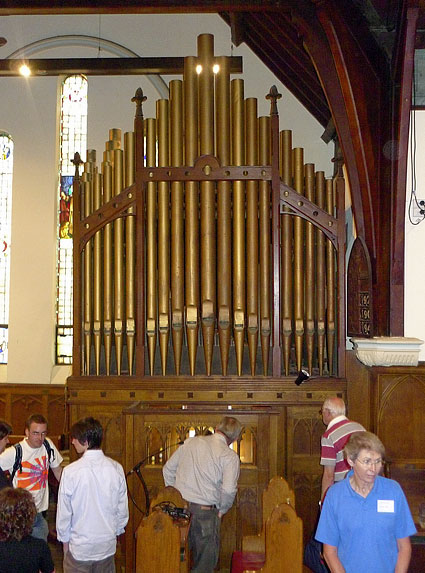

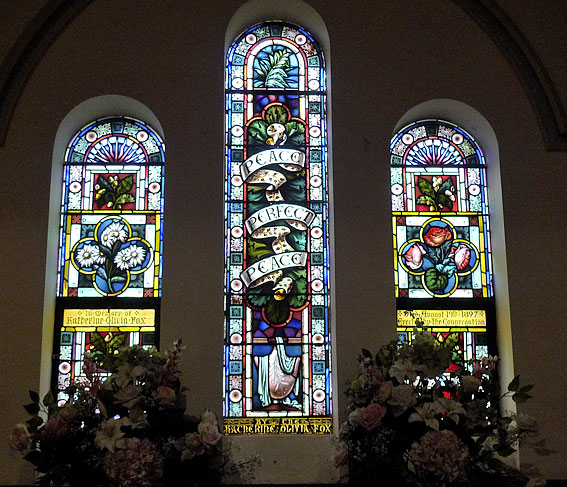
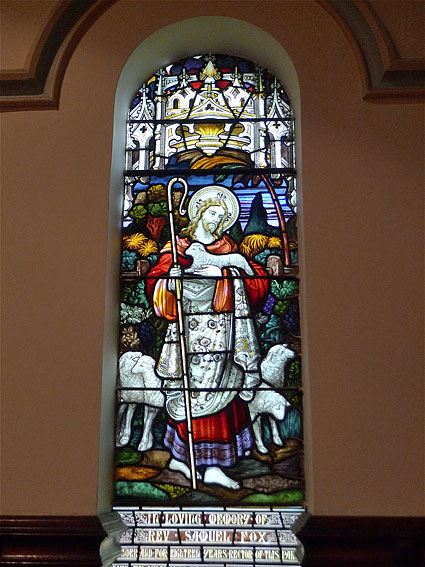
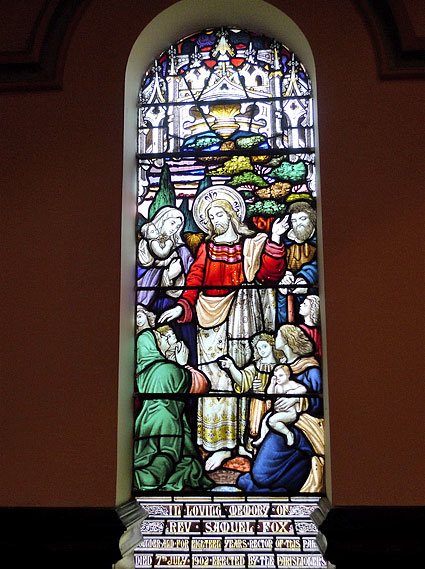
Photos: Trevor Bunning April 2010